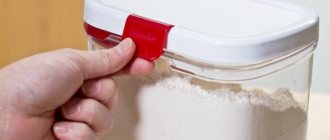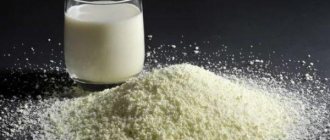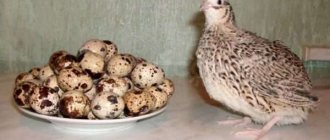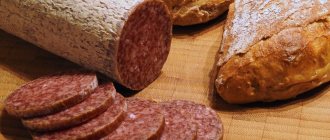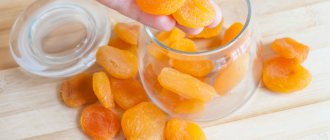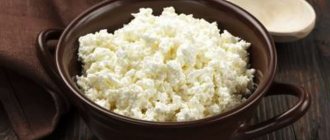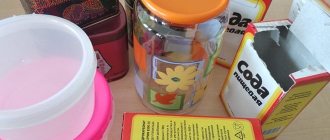Dried fruits, as a result of drying fruit and berry products, have been popular since ancient times. Skillful housewives achieved a long period of storage by drying fruits; this method of preserving tasty and healthy fruits is not rejected even today.
Drying is actively sold in modern stores, and is also prepared by summer residents on their own, when there is an excess of fruit in the season, by drying them in the shade, in the sun, or through special dryers. Regardless of the fact, whether you have prepared dried fruits yourself, or bought them “for future use” on the market, so that the preparations do not spoil and insects do not infest them, you need to know how to properly store them at home, which we will discuss in detail in the article.
Storage period
Like any product of organic origin, dried fruits have an expiration date and certain storage conditions. We can safely say that even the very quality of everyone’s favorite delicacy is determined by its storage conditions.
These terms guarantee the preservation of all consumer properties and indicators of products established by standards, subject to compliance with storage rules for a certain period of time.
The difference between the terms is that the shelf life is the time interval during which a given product can be used, and the shelf life is considered to be the time during which the product retains all its original properties.
The shelf life of products is established from the date of production by the manufacturer.
According to Resolution No. 720 of June 16, 1997: “The service life (shelf life) of the product must be established by the manufacturer in accordance with the legislation on consumer protection, other legal acts, mandatory requirements of state standards or other mandatory rules and contained in the information about the product provided to the buyer."
Catalog
-//W3C//DTD XHTML 1.0 Strict//EN" "https://www.w3.org/TR/xhtml1/DTD/xhtml1-strict.dtd">
Linen tablecloths, tablecloths and napkins, tablecloths and napkins for restaurants, Teflon tablecloths - bamboo towels, table textiles, satin bed linen, camel blankets, tablecloth
- Basket
- Catalog
- Contacts
- About company
- Articles
- home
+7 +7
- Cup holders, sachet covers
- Placemats
- White, gray napkins
- Colored napkins
- Napkin sets
- Tablecloths and napkins with hand embroidery
- Napkins with machine embroidery
- Jacquard napkins
- Table runners, table runners
- Naperons, centrins
- Easter napkins, towels, baskets and bags
- Linen towels
- Linen tablecloths
- Linen tablecloths with border
- Jacquard tablecloths
- Round and oval tablecloths
- Checkered and striped tablecloths and napkins
- Muleton, protector, backing for tablecloth. Spain. Wholesale and retail
- Teflon tablecloths. Teflon-impregnated fabrics
- Transparent tablecloths for the table
- Decorative pillows
- Gift bags
- Bags for herbs. Cases for sachet.
- Kitchen textiles: Aprons, potholders, kitchen towels
- Monogram, monogram, logo. Embroidery to order
- Tablecloths with embroidery. Machine embroidery to order
- Couverts, envelopes for cutlery
- Tablecloths and napkins for restaurants. Fabrics, table textiles for cafes
- Tablecloths and napkins with custom hemstitching
- Gift wrap
- Terry towels with embroidery
- Sale of home textiles. Discounts up to 75%.
- Textiles for the New Year and Christmas
- Fabrics of Spain. Sewing table textiles
Quick search
cache
Cup holders, covers for sachet Napkins for cutlery White, gray napkins Colored napkins Sets of napkins Tablecloths and napkins with hand embroidery Napkins with machine embroidery Jacquard napkins Table runners, table runners Naperons, centerpieces Easter napkins, towels, baskets and bags Linen towels Linen tablecloths Linen tablecloths with a border Jacquard tablecloths Round and oval tablecloths Checkered and striped tablecloths and napkins Muleton, protector, backing for the tablecloth. Spain. Wholesale and retail Teflon tablecloths. Fabrics impregnated with Teflon Transparent tablecloths for the table Decorative pillows Gift bags Bags for herbs. Cases for sachet. Kitchen textiles: Aprons, potholders, kitchen towels Monogram, monogram, logo. Custom embroidery Tablecloths with embroidery. Machine embroidery to order Couverts, envelopes for cutlery Tablecloths and napkins for restaurants. Fabrics, table textiles for cafes Tablecloths and napkins with custom stitching Gift wrapping
Terry towels with embroidery Sale of home textiles. Discounts up to 75%. Textiles for the New Year and Christmas
Fabrics of Spain. Sewing table textiles
Tel “AveryLine offers table textiles and satin bed linen, our profile is bamboo towels, camel blanket and tablecloth. More details: bamboo towels and satin bed linen, camel blankets, table textiles or tablecloths, table textiles - new technologies, table textiles: manufacturers and suppliers
Marking according to GOST
All containers in which dried fruits are packaged are marked with indelible paint (an inscription that can be replaced with a colorful label) indicating:
- name of the manufacturer;
- the product's name;
- net mass, g;
- production dates;
- varieties;
- designations of technical documentation;
- expiration date of nutritional and energy value in accordance with the application.
Transport marking - in accordance with GOST 14192 with the application of the handling sign “Keep away from moisture” must contain the inscription: “Store in a dry, cool, disinfected room.”
STORAGE OF DRIED FRUIT ON AN INDUSTRIAL SCALE
Market analysis shows that in 2015, 217.1 thousand tons of dried fruits were imported into Russia for a total amount of about $250 million, of which 87% came from the Middle East. This entire huge volume of exported dried cranberries, as well as products from domestic producers (currently Russian dried cranberries are especially in demand) must be provided with appropriate storage conditions, which we will tell you about.
Regulations governing the storage conditions of dried fruits
The main document regulating the standards for saving, transporting and selling high-quality products is GOST 12003-76 (as amended), approved by the USSR State Committee for Standardization back in 1976, but still relevant: it was on its system requirements that modern Russian GOSTs were developed.
Currently, the forms of quality control and methods of acceptance of dried fruit are established by GOST 1750-86, issued by the State Standard of the Russian Federation in 1992; general technical conditions for drying production - GOST 32896-2014; The production of dried stone fruits is determined by GOST 28501-90.
How are dried fruits stored in industrial conditions?
Drying storage containers are made only from natural materials: paper, cardboard, plywood, wood, and sometimes from linen (flax-jute).
GOSTs provide for the following types of packaging:
- plywood boxes, cardboard boxes, three-layer paper bags, the total drying weight of which should not exceed 25 kg;
- canvas bags, each of which contains no more than 50 kg of dried apricots, apricots or raisins or no more than 30 kg of dried apples or pears.
Dried fruit packaging
Before packaging, the entire drying volume is checked with a magnetic separator to prevent pieces of metal from getting into the packaged dried fruits.
When laying, the bottom of the container and each layer of fruit are laid out with sheets of waxed paper and pressed together to equalize the overall moisture content of the contents.
Commodity packaging is carried out in polyethylene, cellophane, metallized and paper bags weighing up to 1 kg.
After packaging and (or) packaging, the ends of the boxes are covered with wrapping adhesive tape, and a label is attached indicating the name of the manufacturer, its legal address, net weight, shelf life and release date. In addition, a warning about the standards for optimal storage of products must be stuck on the container, for example: “Store in a cool, dry place at a temperature of no more than 20 ° C.”
State Standards allow the preparation of packaged mixtures exclusively from the following fruits: apples, pears, plums, grapes, dried apricots (or apricots) and cherries.
Weighing and packing dried fruits, photo:
General and sanitary requirements for warehouse premises
In forcedly ventilated warehouses or storage facilities, the relative air humidity in which should be no more than 65–70% at a temperature of 5° to 17°C. Boxes filled with drying are placed on racks or (preferably) in bulk metal containers, pre-treated with insecticidal and antibacterial agents.
In warehouses or storage facilities, preparatory work is also carried out before drying: the walls and ceiling are whitewashed with slaked lime, to combat rodents, the room is fumigated with dichloroethane or a sulfur bomb, treated with pest control agents (such as “Aktellik” or “Rogon”) and deratizers (“Amus”). .
Important: disinsection and deratization are carried out by appropriately qualified specialists and only with certified chemicals.
To prevent damage to dried fruit by rodents, all visible cracks are carefully plastered, and windows and exhaust openings are covered with fine-mesh (no more than 2 mm) metal grilles.
Dried fruit warehouse, photo:
Transportation of packaged products
It is allowed in trucks or other types of transport only of a closed or tented type, the container of which must reliably protect the container from direct sunlight and excess moisture, but ensure air circulation inside.
To prevent sudden temperature changes, transportation of the main volumes of dried fruit is recommended at an average daily temperature of 10° to 20°C.
The manufacturer must also take care of the safety of the products and provide transported boxes or bags with a warning sticker such as “Avoid moisture.”
It is important to know that dried fruits are a regulated product and are subject to phytosanitary inspection when crossing the border, so the manufacturer is obliged to take care in advance of completing the accompanying customs and sanitary documents.
How to store dried fruits in stores and catering establishments (+ implementation features)
1. For large retail or wholesale chains, it is better to take care of the centralized storage of dried fruits in warehouses prepared according to the above standards, and from there transport the required amount of packaged dried fruit to points.
2. To prevent product spoilage, small stores are also required to create storage conditions that best comply with GOST standards, but at the same time purchase volumes whose estimated sales time will not take more than one month.
Important : in non-specialized stores of any form of ownership and sales volume, only industrially packaged dried fruits should be sold.
3. In order for the buyer to evaluate the appearance of the drying, it is recommended that two or three (no more) samples, packed in transparent polyethylene or cellophane, be placed on the counter, and the main part, identical to the one offered, is stored in a warehouse subject to temperature, light, etc. modes.
4. To prevent moisture from entering, it is forbidden to lean bags or boxes with drying materials close to the walls. The gap should be at least 70 cm, the distance between containers with dried fruits and other products should be 110 cm; in addition, packages should not be placed on the floor - only in containers, on racks or wooden pallets.
5. In canteens, cafes, and restaurants outside the warehouse, it is prohibited to store dried fruits in a volume greater than for preparing one daily food ration. If the dryer was not completely used in one day, but was in the kitchen, then before storage it is sent for mandatory drying.
6. Even if all standards for storing dried fruits are observed, the storekeeper is obliged to regularly monitor the appearance of the products. If mold appears, all affected dried fruits must be disposed of immediately; if bugs are detected, the drying process is carefully sorted, the unusable fruits are disposed of, and the rest are sent for further drying and frying in the oven.
Important : try to purchase high-quality packaged dried fruits in stores, because storage conditions in markets are often completely inconsistent with standards. Please note that most of the boxes with hanging drying from market sellers are not covered with anything, and this is a direct path to infectious and other diseases: germs transmitted by airborne droplets, pesticides and carcinogens contained in the air, and simply dust naturally settles on fruits But if you nevertheless purchased a dryer on the market, be sure to soak it for one and a half to two hours in warm water: this will remove some of the harmful substances.
What does it depend on?
In order for dried fruits to remain fresh for as long as possible, it is always worth taking care of the storage conditions of this product , because all sorts of shortcomings can directly affect even the shelf life or storage of the product.
Materials for packaging dried fruits must be clean, durable, free of foreign odors, dry and free from pests, because these facts directly affect the quality of the fruit.
The composition of the product is important ; unfortunately, the fruits are subjected to careful chemical processing in order to make them more attractive to buyers. Most of the dried fruits that we purchase in stores are obtained through industrial drying, which is why they lose their color and even their smell.
Manufacturers use dyes, additional additives (such as E220), glycerin, vegetable oils, and sometimes burner processing is used for accelerated drying, which gives the fruit a gasoline taste. All this in one way or another affects the shelf life of the product, sometimes for the worse.
The benefits of dried fruits
Modern housewives prefer freezing as a way to prepare fruit for the winter, considering drying to be a useless product, and they are very mistaken. Even in the old days, through drying, fruits were prepared in reserve to ensure the ability to replenish the deficiency of vitamins and microelements in the body in winter and spring, when a person critically needs them. According to researchers, drying contains significantly more vitamins than frozen products, which makes this method of long-term preservation of fruits and berries a priority.
The benefits of including dried fruits in the diet are undeniable:
- Dried fruits help improve brain function, increase mental activity and assimilate new information.
- A complex of vitamins and minerals, which remains almost in full after drying, with the exception of vitamin C, which is difficult to preserve, when included in the diet every day, allows you to increase and maintain a person’s immunity in good shape.
- The composition includes protein as an important component for the health of the human body.
- The ingredients that make up dried fruits help accelerate regeneration processes in the body, which has a positive effect on the condition of the skin, hair and nails.
- Dried fruits have a positive effect on metabolic processes and promote the active elimination of toxins, which has a positive effect on a person’s overall well-being.
A surge of vivacity, strength and energy are feelings that are activated against the backdrop of a regular snack of dried fruits, and for this alone they are worth appreciating, and if you add the described, research-based facts of the positive effect of dried fruit “semi-finished products” on the body, the “hobby” becomes understandable "of our ancestors with such products. In order for dried fruits to be suitable for consumption over a long period and truly bring benefits, it is worth figuring out how to prepare them for saving, what and where to store them: the final result directly depends on the correctness of the manipulations.
How to determine freshness when purchasing and at home?
First of all, many people try to determine the freshness of a product by its appearance. Manufacturers are trying in every possible way to attract our attention with the shining surface and bright color of dried fruits, sometimes even resorting to treating the fruits with various substances for a more intense aroma. Unfortunately, quite often all this is not a guarantee of good quality.
In order not to make a mistake, you should choose dried fruits with a matte surface, because this is an indicator that the product is natural, because due to the absence of most of the moisture, the fruits cannot shine.
Most often, naturally dried dried fruits do not have a presentable appearance, but they are the ones that are good for health.
For example:
- The bright orange color of dried apricots indicates that they have been exposed to chemical dyes. Dried under natural conditions, it has a dark shade, sometimes even brown, with a gray coating.
- Raisins, if all the rules of drying and storage are followed, should be brown or black (depending on the grape variety).
- The brown tint of prunes indicates that they have been in boiling water, therefore, they have lost some of their beneficial properties, and the shiny surface only indicates treatment with glycerin or wax.
As for those cases when you purchased dried fruits of inadequate quality, you can almost always return them (if the defect did not occur through your fault).
Preparing products for storage
When drying fruits yourself, they do not need any special preparation for storage. Drying takes place under the careful control of the housewife: spoiled and unsuitable for storage pieces are promptly removed during the drying process, so the finished dried fruits will only need to be placed in an appropriate container and placed in a safe place suitable for storage conditions.
The situation is a little different with store-bought drying. Probably every housewife who knows what home drying looks like has paid attention to the difference between store-bought and store-bought fruits: the shiny surface, bright, rich color of the latter suggests that pre-sale treatment with special substances was applied to them.
Questions about how manufacturers process dried fruits, how harmless the substance is, and how to get rid of it are of interest to many buyers. Glycerin, special oil for rubbing fruit, sulfur dioxide and other substances, not always of natural origin, can be used as a “coloring” or “shine” ingredient for fruits. Often, manufacturers process products in order to improve their consumer qualities, for longer storage, or in order to increase demand for the product.
Decontamination of processed dried fruits can be done as follows:
- Place them in a container and cover with cold water for one to two hours.
- Preheat the oven to about seventy degrees and dry the washed dried fruits.
If the product does not have “unnatural” signs of processing, it does not need to be soaked, however, it is still necessary to sort it out and dry it. You can complete the task either by naturally drying it in the shade with a thin layer on a paper towel, or by placing it in the oven, preheated to seventy degrees, for an hour. The second method allows you to dry the product and prevent the development of living creatures, moths and other insects in it, and the appearance of mold.
Such an inspection of even hermetically sealed dried fruits and further drying in the oven will ensure their consumer properties for a longer period.
Rules for keeping at home
- Dried fruits should be stored in a glass, closed container. If you store fruits in a vacuum, this will prevent the appearance of harmful microorganisms.
- There is also a way to store fruits in thick cotton bags, pre-soaked in salt water. The fabric prevents mold by absorbing excess moisture, and the salt repels pests.
- Storing dried fruits in plastic bags and plastic containers is not the best solution, because the product gets damp, becomes moldy and is a good place for insects.
- It is those fruits that are located in damp and warm places that are susceptible to destruction. The storage location of the product should be well ventilated and not exposed to direct sunlight.
- When frozen, dried fruits lose some of their beneficial substances, but if there are no other storage methods left, you need to follow certain rules:
- Fruits should be placed in small batches in food containers.
- Dried fruits must be divided into portions, since re-freezing the product is not permissible.
- Thawing should only be done at room temperature; dry fruits should not be defrosted in boiling water, as they will lose many of their properties.
GENERAL CHARACTERISTICS
How to choose dried fruits suitable for long-term storage
First of all, we must clarify that dried fruits are fruits from which 75–85% of the moisture has been removed by natural or forced means. Drying methods are very important for the shelf life of the product, and most importantly, for its useful components.
The most correct way of drying is to naturally dry the fruit in the shade (the water evaporates gradually, and the slowly drying pulp, which is not subject to sudden heat shock, retains vitamins as much as possible).
Drying in the sun has both pros and cons: fruits dry faster and release more moisture, but due to exposure to direct sunlight they may lose some of their beneficial properties (for example, vitamins A and C).
But, undoubtedly, the most unhealthy method is forced drying using high temperatures (especially using burners, lamps, ovens running on gas, gasoline or diesel fuel). Due to shockingly high temperatures for fruits, up to 55-60% of healing microelements are “burned out” in them, and chemical fragrances of fuels and lubricants are quite capable of ruining the pleasant smell and taste of dried fruits.
In industrial production, washing and cleaning machines, dehydrators, belt dryers and other devices are used in the process of drying fruits.
Dried fruit production line, photo:
How to determine how fruit is dried?
Well-prepared drying is truly a storehouse of beneficial microelements and vitamins, which, if properly preserved, retain their properties for many months. But the table below will help determine the quality of the fruit.
Table 1
| Product name | Characteristics of a product dried naturally without the use of chemicals, etc. |
| Raisins black | Matte blue-black, medium hard, sweet, no off-flavors |
| Raisin quiche-mish | Matte brown, medium firm, very sweet, no off-flavors |
| Dried apricots | Grayish, brown, medium soft, sweet and sour, without foreign flavors |
| Dried apricots | Gray, brown, medium soft, sweet and sour, no foreign flavors |
| Prunes | Matte black, firm, medium sweet, no foreign flavors (including smoked flavors) |
| Apples, pears | Yellow-brown matte, flexible, medium sweet, no off-flavors |
| Bananas | Dark brown, matte, medium soft, very sweet, no off-flavors |
| Figs | Grey, matte beige, medium soft, very sweet, without foreign flavors (a sweet white coating is allowed - this is glucose released during the drying process) |
| Cranberry | Dark burgundy, medium hard, sour with slight bitterness, no foreign flavors |
| Cherry | Burgundy-brown, matte, firm, sweet and sour, without foreign flavors |
An interesting fact is that the varying degrees of hardness, elasticity or softness of finished dried fruits are influenced by the hygroscopicity of the pulp, as well as the presence in it of a very useful organic compound - dietary fiber, which can reduce cholesterol levels, help with gastrointestinal problems, and balance blood sugar levels and have a positive effect on hemoglobin. The more dietary fiber there is in drying, the softer and more flexible it is.
How to identify chemical additives used when drying fruits
We often come across very attractive-looking dried fruit on the shelves: amber, seductively shiny, fragrant and very sweet - but few people know that behind this “beauty” lies almost the entire periodic table. And in order not to buy a mixture poisoned by chemicals instead of a healthy product, remember some very important parameters:
- The bright yellow or amber color is obtained by soaking in food dyes from the E line, which include, for example, toxic alkanine or allergenic tartrazine. Without special reagents, you won’t be able to tell whether dried apricots or quiche are colored with beneficial curcumin or dangerous riboflavin phosphate, so pay your attention to the nondescript, dull fruits - they will be the most useful.
- Carefully examine a fig or any other fruit that has a fairly rough skin: if the dried fruit has deep cracks, then it was previously soaked in caustic soda (penetrating inside, the soda destroys the dense shell, it cracks, and the process of removing moisture is accelerated).
- A beautiful, shiny, oily-to-the-touch gloss on dried fruit is another dishonest method of attracting customers. Drying itself cannot shine due to the minimal amount of moisture in it, so increase its attractiveness by lubricating it with glycerin or hydrogenated soybean oil, which contains extremely harmful trans fats.
- “Smoked” prunes or dried apricots? In no case!!! Most often, they are smoked with synthetic “liquid smoke”, the smell and taste of which is determined by carcinogens that are hazardous to health.
Very important : please do not pay attention to this fake “beauty”: truly healthy dried fruits are inconspicuous, dull, never shine and do not have a bright aroma. Buy them - if stored properly, they will still contain vitamins after three years.
This is what healthy ugly dried fruits look like
At what temperature is it better to store dried fruits?
Shelf life
table 2
| Product name | 2° - 10°C (optimal storage temperature) | 10° - 17°C (permissible temperature) | 18° - 24°С (maximum permissible) | from 0° to -20°С (freezer) |
| Raisins black | up to 18 months | up to 1 year | up to 6 months | practically unlimited time provided that a constant temperature is maintained. (Divide the drying into small portions and defrost only the amount needed) |
| Raisin quiche-mish | up to 18 months | up to 1 year | up to 6 months | |
| Dried apricots | up to 1 year | up to 6 months | up to 3 months | |
| Dried apricots | up to 1 year | up to 6 months | up to 3 months | |
| Prunes | up to 1 year | up to 6 months | up to 3 months | |
| Apples, pears | up to 18 months | up to 1 year | up to 6 months | |
| Bananas | up to 10 months | up to 6 months | up to 3 months | |
| Figs | up to 10 months | up to 6 months | up to 3 months | |
| Cranberry | up to 18 months | up to 1 year | up to 10 months | |
| Cherry | up to 18 months | up to 1 year | up to 10 months | |
| Rose hip | up to 3 years | up to 18 months | up to 1 year | |
| Date fruit | up to 10 months | up to 6 months | up to 3 months |
Air humidity in storage areas should be no more than 65–75%.
It is clear from the table that dried fruits with low humidity (from 15 to 18%) and low sucrose content compared to other fruits have a longer shelf life, since it is the combination of water and sugar that creates a breeding ground for the appearance of mold and pathogens that lead to to complete unsuitability of the product.
Elevated temperatures (over 17 °C) also negatively affect the safety of drying, significantly accelerating chemical processes at the enzymatic level, which leads to the appearance of mold and other pathogens.
Very important: dried fruits, even slightly contaminated with mold, should not be eaten!!! Aflatoxins, which have carcinogenic properties and are contained in any type of mold, can accumulate in human internal organs, gradually suppressing natural immunity and causing dangerous diseases, including oncology.
Can I eat it after the specified time?
If the dry fruits look natural in appearance: there are no pests, no stains or moisture, the color and smell are unchanged, then you can use such a product, but you need to evaluate the possible risk, because the expiration dates are indicated by the manufacturer for a reason.
Dried fruits are one of the healthiest products in our lives , but they should be consumed sparingly and wisely, not forgetting about storage conditions and quality. Before use, they should be treated with boiling water or soaked in water, and then rinsed. Be careful when choosing fruits and take care of your health.
How to store dried fruits: suitable containers
How to properly store prunes, dried apricots and other dried fruits at home:
- Wooden boxes with lids are suitable for dried apricots and prunes.
- Vacuum and cellophane bags, plastic and glass containers are suitable for all types of dried fruits. Containers are checked periodically to prevent mold and bugs from appearing.
- To store dried apples and pears, use bags made of cotton, linen or burlap. They are first rinsed in clean water, dried and ironed on both sides with a hot iron. Another option is to rinse in a saline solution of 1.5 liters of water and 100 g of salt and then dry. Salt protects against insects and regulates humidity. There should be no moths in the room, otherwise they will easily penetrate the bags and lay larvae there.
- Paper bags with clothespins are suitable for storing figs and dates. They are not placed next to foods with a strong odor.
other methods
Storing in the refrigerator protects against bugs and bacteria. To protect dried fruits from foreign odors and mold, they are hermetically packaged. This is how dates, prunes, raisins, and dried apricots are stored for a year.
Dried fruits last three times longer in the freezer than in the kitchen cabinet. They are placed in vacuum or special bags for freezing, the air is removed from them, tightly closed and the packaging date is stuck on.
Important! For storage, use only well-dried, clean fruits.
Dried fruits in the closet, on the balcony or in the pantry are stored in special containers or bags. This method is suitable for dried apples, pears and compote mixture.


